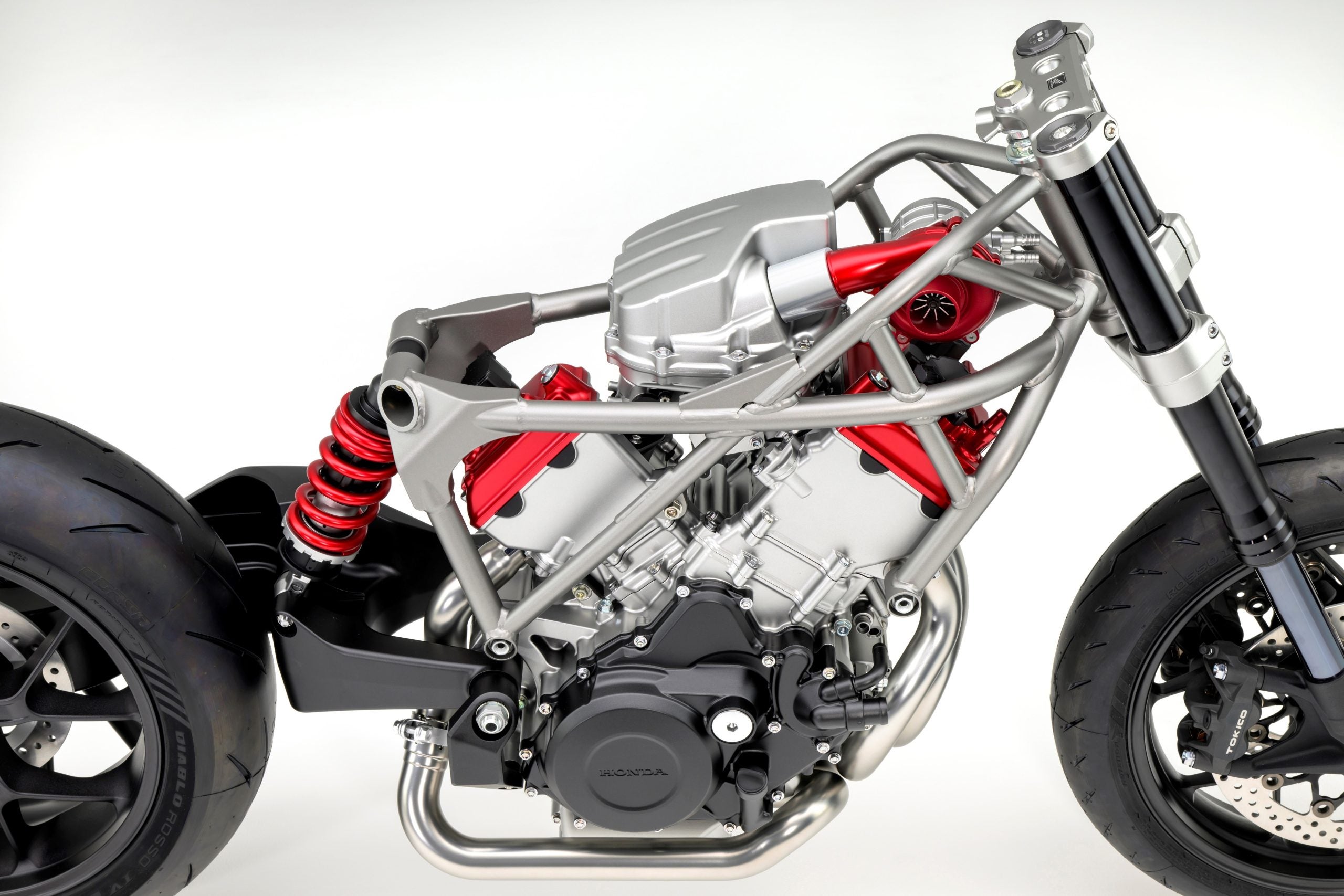Do you think that Honda’s CRF450R is the biggest news in off-road bikes this year? Perhaps, but Honda hasn’t neglected its two-strokes, and the 2002 CR250R has a couple of features that represent a pretty significant step forward in engine design.
Electronically controlled exhaust valves are nothing new. At least, they are nothing new in the GP roadracing world, where the trickest two-strokes Honda and other manufacturers strut their stuff every race season. They are entirely new, however, on 250 motocrossers, and Honda’s 2002 CR250R is the first to feature this advancement.
Basically, the servo motor (which is quite light, by the way — we got to examine it first hand) opens the exhaust valve progressively, rather than using a traditional, ramp design that is less precise (generally, more sudden). The servo motor is rpm sensitive, helping to maximize performance from bottom end to top end.
The 2002 CR250R engine also features case reed induction. Case reed induction has been around in the 125 class for quite a while, but 250 motocrossers have generally relied on a cylinder reed induction location. Working with the new power valve design, the case reed engine, according to Honda technical representatives, produces substantially more horsepower than last year’s CR250. How much? According to Honda, the new engine produces 52 horsepower at the crank versus 49 from last year’s engine.
Manufacturer power claims are always suspect, but Honda did something that lends credibility to their claim of a significant boost in power. Honda dropped two teeth from the rear sprocket, significantly raising the overall gearing in the bike. By raising the overall gearing, Honda put more stress on the engine, and similar acceleration could only be achieved by higher horsepower levels. Basically, the new, smaller rear sprocket indicates Honda is confident that the new has a lot more power.
The 47mm Shoa fork on the CR250 is a new design that is 12.3 ounces lighter than last years and features Molybdemum coating in key areas to reduce friction. Honda claims the new fork moves as smoothly as a works fork of a few years ago.
With entirely new, third generation aluminum frame is also significantly lighter, and narrower where the rider grips the bike. Honda brought along a 2002 CR125 (which shares the same basic frame design with its larger siblings). We sat on the bike, and it was impressively slender — certainly thinner than last year’s model. A new rear brake system on the CR250R is 11.8 ounces lighter due, largely, to the integration of the rear master cylinder and the fluid reservoir. This design has been common to works bike for a while, and Honda brings it to the masses this year.
Other detail changes designed to reduce weight include a magnesium clutch cover, aluminum spoke nipples and new rear hub. Overall, Honda claims the new CR250R will be approximately six pounds lighter than last year’s model. That puts its wet weight at approximately 217 pounds — a phenominal figure for the 250 class which, if accurate, would be roughly seven pounds lighter than its nearest competitor. In looking at the weight of any motocrosser, ignore manufacturers’ claimed dry weights. Honda’s claimed dry weights have changed very little over the years, even though the actual wet weight of their bikes has gone up and done significantly. If you look at the weight savings in the individual components of the new CR250, the six pound weight savings makes sense.
Basically, during the same year it is introducing the entirely new CRF450R, Honda is also introducing an entirely new, “clean sheet” reed design of its CR250R, and it appears impressive on paper. We can’t wait to test it.
The CRF450R four-stroke is the headline grabber in Honda’s motocross line-up for 2002. Looking at the technical specifications of this bike, and listening to Honda’s engineers discuss it, there is no question that Honda pulled out all the stops to put this machine at the top of the four-stroke motocross class. All of the wright saving features found on the new CR250R are present on the big four-stroke, including the frame, rear brake system, new forks, aluminum spoke nipples and rear hub. Of course, the third generation aluminum frame is also present. Overall, Honda is claiming that the wet weight of the CRF450R is 17 pounds lighter than Yamaha’s 2001 YZ426F. Honda’s claimed wet weight is 231 pounds.
The single overhead cam design is lighter and more compact, and Honda is claiming more horsepower on the dyno than its Yamaha competitor (55 horsepower at the crank).
Honda representatives stress that the new CRF450R is very easy to kick start — as easy as the KTM four-stroke motocrossers. If so, Honda will have addressed a significant concern of four-stroke motocross bike owners.
Honda also stresses that there is very little engine braking in the CRF450R. So little, in fact, that two-stroke specialists become comfortable on the new four-stroke very quickly. Indeed, the machine was designed by Honda to feel just like a CR250R with a different exhaust note and a different powerband. Interesting.
Without engine braking and with the free-revving nature stressed by Honda, one has to wonder whether the CRF450R will “hook-up” like a traditional four-stroke coming out of corners. Honda stresses that it does, combining the best of the two-stroke and four-stroke worlds. Again, we’ll see when we get a chance to test it.
Honda claims a new CRF450R has an exhaust note that measures 97 decibles — slightly quieter than some of the competition.
By the way, Honda deliberately used titanium valves only on the intake side of the cylinder head. According to Honda, titanium valves are less reliable on the exhaust side, because exhaust valves are subjected to much higher temperatures where traditional stainless steel proves more reliable and durable.
Honda didn’t neglect the CR125R, either. Although not “all new” like the other big bikes in the line up, the CR125R has significant changes. The third generation aluminum frame is one of those changes, along with many of the weight saving components described above for the bigger bikes. Overall, the wet weight of the CR125R, again, according to Honda, is six or seven pounds lighter than the 2001 model.
Engine performances were where the 2001 models suffered most against the competition, however, and Honda has taken steps to address this. A new 36mm Mikuni TMX-X carbureator





